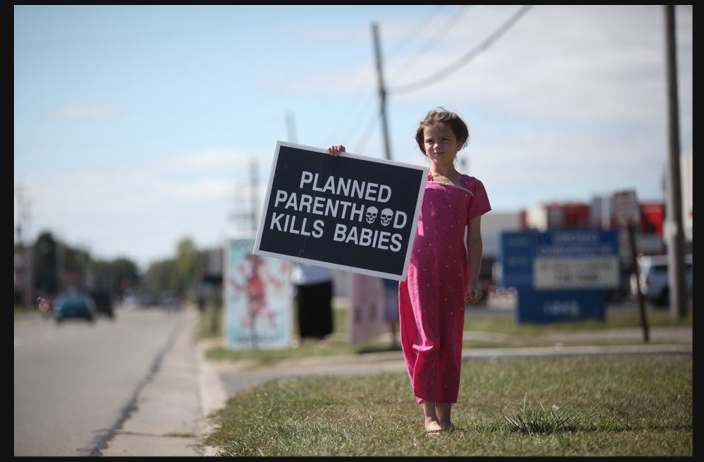
Credit: New York Times
H/T: Jezebel
I found an interesting article posted on Jezebel today about a New York Times story, with an accompanying video report, about anti-abortion protestors rallying together after the death of an anti-abortion activist, James Pouillon, in Michigan last month. The article specifically discusses the ethics of using such images within the debate, which is a particularly vexed question.
I happened to find Nate’s blog on here from February when several billboards were displayed in front of Gregory Gym with graphic pictures of fetuses. I also remember seeing such images, and feeling that their presentation seemed to lack enough context for me to judge whether or not the photos were credible evidence of the claim that they attempted to present: namely, that since fetuses look human, they are humans, and so that ending their lives via abortion is murder.
What impressed me in the article was the interview with Monica Migliorino Miller, the professor whose photographs are featured in the Times’ photo review. She claims in producing her images, she has “precisely documented each fetus she photographed, by date, location and — with the help of a doctor — gestational age.” It’s then important to note that all of the photographs presented by the NYT in their review are all of fetuses at least fourteen weeks or older, almost three months along, and thus are more fully formed than others earlier in the first trimester. What isn’t addressed is how the fetuses were obtained for her to photograph in the first place: does the mother have the right to decide whether or not her fetus should or could be so photographed?
Like Nate, I’m not sure what role such photographs should or can play in an ethical debate about abortion. The more the photograph’s context is described, the more it can usefully contribute. However, as pointed out to me by my colleague Sarah Orem, such images threaten to preclude debate by claiming an authenticity that cannot be easily disputed. What might also make these images especially fraught is how the photographic lens in these cases seeks to penetrate the intimate interiors of a woman’s body. I know that Andi has already discussed the ethics of war photography, but these images seem to hold a different status. Photographs make claims to presented “reality” which many of the images on this blog itself seem to disprove. How much responsibility does a responsible rhetor have to take on in using and arguing against such images?
Recent comments
2 years 29 weeks ago
2 years 44 weeks ago
2 years 44 weeks ago
2 years 50 weeks ago
3 years 4 weeks ago
3 years 4 weeks ago
3 years 4 weeks ago
3 years 6 weeks ago
3 years 6 weeks ago
3 years 6 weeks ago